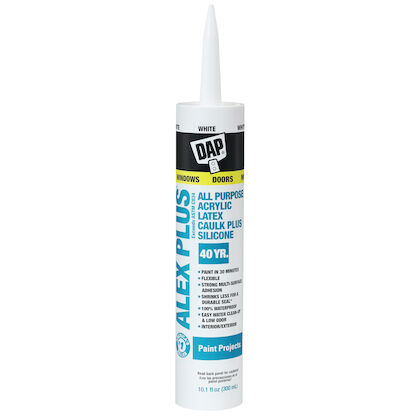Use of caulk vs.
Vinyl caulk vs silicone caulk.
Acrylic caulk and silicone caulk have very different qualities and are designed for specific purposes.
This type of caulk is harder to install because of its sticky nature and cleaning up mistakes is not easy.
A cartridge or a squeeze tube.
A cartridge and caulk gun give a more continuous bead than a squeeze tube which is better for small projects.
Latex caulk and silicone sealant typically dry to the touch within 30 minutes but they can take up to 24 hours to completely cure and be fully waterproof.
Ge silicone caulk is made from 100 silicone which is chemically cured once it is applied and provides a permanent solution to whatever projects you use it for.
Silicone caulk is flexible and works well in joints that have movement.
Silicone caulk is expensive but worth the cost due to its flexibility and long life.
There is a huge selection of different sealants available and choosing the right one can be difficult.
The material does not yellow over time and has high resistance to oxygen ozone and uv light.
Caulk comes in two forms.
Pure silicone caulk.
These products offer the ease of use of latex with the added durability of silicone.
Caulk and silicone are fairly equal in strength but they differ in the fact that caulk hardens into a rigid substance while silicone remains more flexible.
Cartridges typically have 9 to 11 ounces of caulk versus a squeeze tube which has 3 to 6 ounces.
Silicone caulk lasts about 30 years.
It is the perfect product to use when caulking kitchens bathrooms and other plumbing jobs and will keep water out of the areas it doesn t belong.
Recently we told you about filling the gaps around the picture rail in our bedroom and redoing the silicone seal around our bath you can read about it here and here.
Caulk dries quicker than silicone and it shows good resistance to weathering but it s less tolerant to movement than silicone based sealants.
Unsanded caulk may not adhere as well as sanded caulk to wet surfaces and sanded grout.
Caulking is a sealant but is fairly rigid when dry which makes it ideal for sealing gaps or seams in areas with minimal contraction and expansion.
Silicone caulk adheres well to metal plastic glass and ceramic.
The only big downside is that it s not paintable.
Caulk is designed to be used in areas where there will be little expansion and contraction like around your bathtub.
Caulking can be applied to seal cracks in painting applications for prevention against moisture and lastly to insulate against cold air coming into a house or hot air from leaving a house.
Painting over this type of caulk can not be done.
The properties that make silicone suitable for these uses include its ability to create watertight seals.
Caulking has many applications and these products are designed to meet these separate needs.

